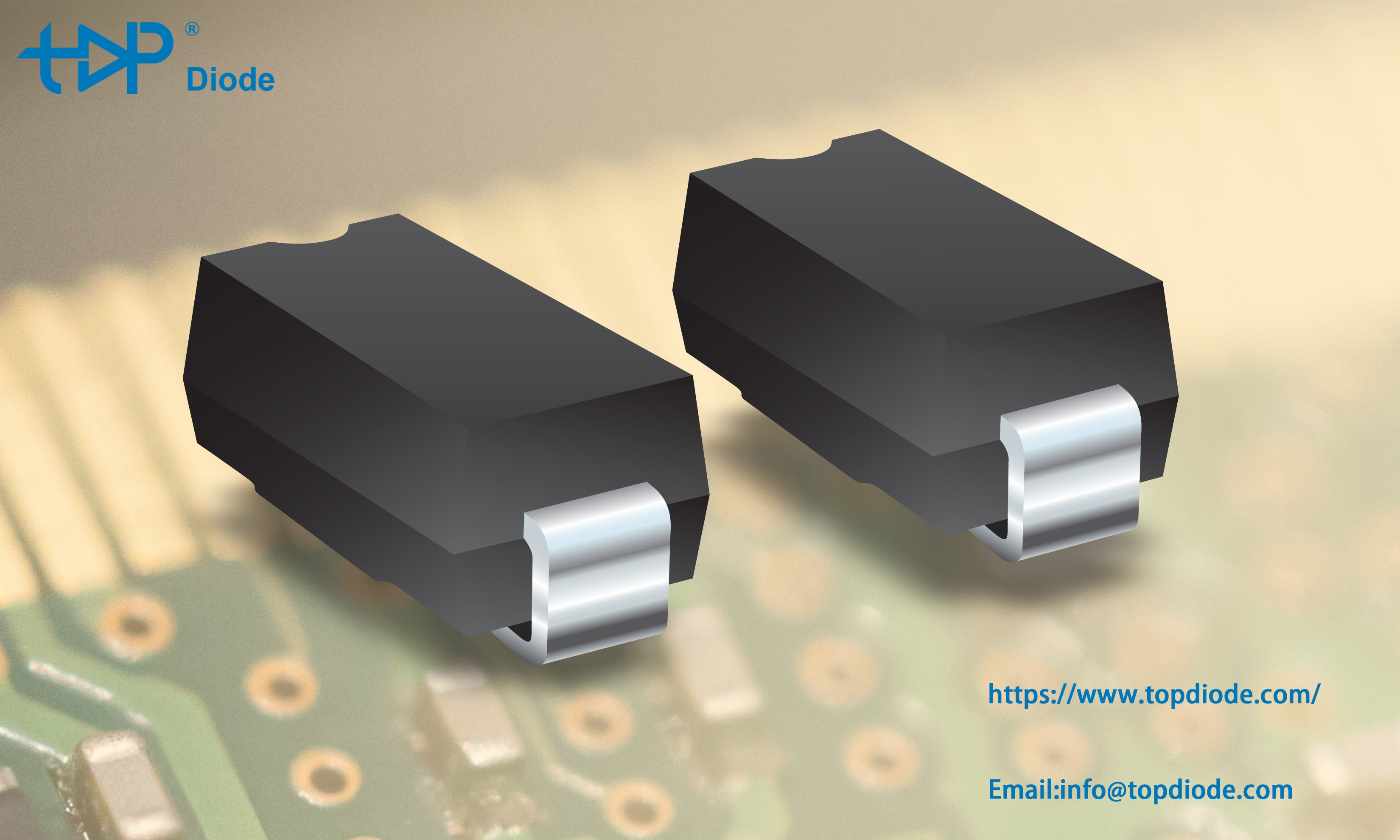What are TVS Diodes?
By Kelvin Tan
TVS Diodes are electronic components designed to protect sensitive electronics from high-voltage transients. They can respond to overvoltage events faster than most other types of circuit protection devices, and are offered in a variety of surface mount and through-hole circuit board mounting formats.

They function by limiting voltage to a certain level (referred to as a "clamping" device) with p-n junctions that have a larger cross-sectional area than those of a normal diode, allowing them to conduct large currents to ground without sustaining damage.
TVS Diodes are generally used to protect against electrical overstress such as those induced by lightning strikes, inductive load switching, and electro-static discharge (ESD) associated with transmission on data lines and electronic circuits.
topdiode TVS Diodes can fit a wide range of circuit protection applications but were primarily designed to protect I/O interfaces in telecommunication and industrial equipment, computers and consumer electronics.
topdiode TVS Diode characteristics include:
Low incremental surge resistance
Unidirectional and Bidirectional polarities available
Reverse standoff voltages range from 5 to 512V
RoHS compliant–Matte Tin Pb-free plated
Surface-mount power ratings from 400W to 5,000W
Axial lead power ratings from 400W to 30,000W (30kW)
High current protection available for 6kA and 10kA
TVS Diode Glossary
Clamping Device
TVS is a clamping device that limits voltage spikes by low impedance avalanche breakdown of a rugged silicon PN junction. It is used to protect sensitive components from electrical overstress generated by induced lightning, inductive load switching and electrostatic discharge.
Operating Temperature Range
The minimum and maximum ambient operating temperature of the circuit in which a device will be applied. Operating temperature does not allow for the effects of adjacent components, this is a parameter the designer must take into consideration.
Capacitance
The property of a circuit element that permits it to store an electrical charge. In circuit protection, the off-state capacitance is typically measured at 1 MHz with a 2V bias applied.
Reverse Standoff Voltage (VR)
In the case of a uni-directional TVS diode, this is the maximum peak voltage that may be applied in the 'blocking direction' with no significant current flow. In the case of a bi-directional transient, it applies in either direction. It is the same definition as Maximum Off-state Voltage and Maximum Working Voltage.
Breakdown Voltage (VBR)
Breakdown voltage measured at a specified DC test current, typically 1mA. Usually a minimum and maximum is specified.
Peak Pulse Current (IPP)
Maximum pulse current which can be applied repetitively. Usually a 10x1000μs double exponential waveform, but can also be 8x20μs, if stated.
Maximum Clamping Voltage (VC or VCI)
Maximum voltage which can be measured across the protector when subjected to the Maximum Peak Pulse Current.
Peak Pulse Power (PPP)
Expressed in Watts or Kilowatts, for a 1ms exponential transient it is IPP multiplied by VCL.
P4KE6.8-P4KE440CA Axial Leaded 400W TVS Diode P4KE series
P6KE6.8-P6KE440CA Axial Leaded 600W TVS Diodes P6KE series
SMAJ5.0--SMAJ440CA Surface Mount TVS -Topdiode
SMBJ5.0--SMBJ440CASurface Mount TVS -Topdiode
SMCJ5.0-SMCJ440CA 1500W Suface Mount TVS Diode Topdiode
TVS DIODE SD03, SD05, SD12-Topdiode
5.0SMDJ12A-CA-5.0SMDJ170A-CA-Topdiode
SMDJ5.0--SMDJ170CA-Surface Mount TVS -Topdiode
ESD3Z_SERIES SOD-323-Topdiode
SMA6J5.0--SMA6J200CA-Topdiode
TVS Diodes P6SMB6.8-440ACA Topdiode
TVS Diodes-P4SMA6.8-440ACA
1.5KE6.8A-THRU-1.5KE600A-Topdiode





